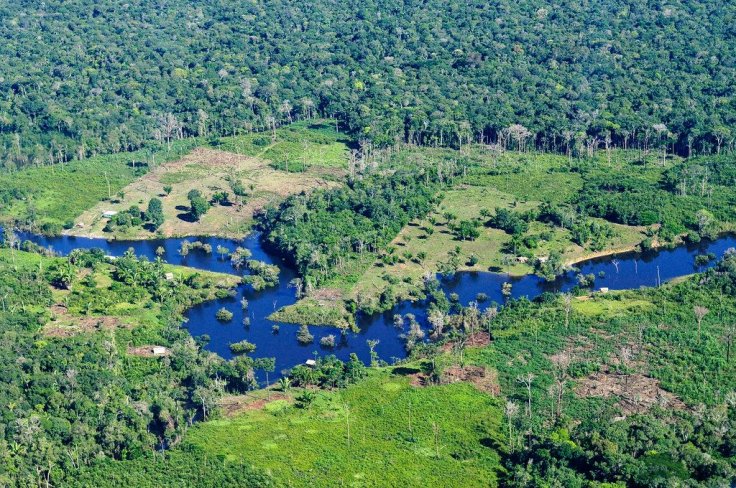
Before the COP26 climate summit kicked off in Glasgow this week, a worrying number of leaders' statements and media releases seemed to contain a glaring omission - biodiversity loss. So the Glasgow Leaders' Declaration on Forests and Land Use, announced within 48 hours of the conference getting underway, came as both a welcome surprise and a great relief.
The declaration, which emphasises "the critical and interdependent roles of forests of all types, biodiversity and sustainable land use in enabling the world to meet its sustainable development goals", commits its 105 signatories to work together to end and reverse deforestation by 2030. The combined landmass of the list of signatories – which includes China and Brazil – accounts for approximately 85% of the world's forests.
The announcement is a major step towards recognising that combatting biodiversity loss must go hand in hand with reducing carbon emissions in our efforts to inhabit the planet in a more sustainable way.
Biodiversity loss is not limited to the Amazon or countries more closely associated with a vibrant wildlife. It is all around us. The latest DEFRA biodiversity figures reveal the extent of Britain's biodiversity loss, with key UK species and habitats now in rapid decline. Across the world, the monitored populations of wild animals have decreased by an average 68% in the past 50 years, according to the Worldwide Fund for Nature.
Last month, a less well publicised environmental summit took place. Between 11th-24th October, the UN Biodiversity Conference (or COP-15) was hosted virtually from Kunming in China. Its stated mission was to tackle the rapid collapse of species and ecosystems that collectively sustain life on earth.
This conference could not have come at a more critical time, and we must hope that COP26 does more to magnify the key issues it addressed. Biodiversity is declining faster than at any point in human history, with wildlife populations falling by more than two-thirds in less than 50 years, according to the WWF.
Unfortunately, this situation is now only expected to worsen, with the International Union for Conservation of Nature (IUCN) estimating that almost a third of all species currently face the threat of extinction.
The air we breathe, the water we drink, the food we eat and the medicines need to survive all rely on the maintenance of a fragile ecosystem of living things. In fact, about 75% of our fresh water comes from healthy forests, approximately 75% of crops depend on pollinators and more than half of the global population depend on nature for their livelihoods.
This means that if active steps are not taken to tackle biodiversity loss, many of our planet's most vital resources will soon be depleted.
Leaving no room for uncertainty, Professor David Macdonald from the University of Oxford has stated that 'without biodiversity, there is no future for humanity.'
Failing to protect biodiversity will also directly hinder our fight against climate change. This is because healthy ecosystems such as wetlands, grasslands, forests and seas serve as gigantic carbon sinks which absorb more carbon from the atmosphere than they release.
Research published in Nature found that restoring the planet's most degraded land and protecting biodiversity hotspots could boost the Earth's carbon stores while preventing up to 60% of projected species extinctions. As the report also shows, failing to tackle the climate and nature crisis in tandem could mean solving neither.
Searching for holistic solutions, more than 100 countries at Cop-15 recognised the need to reverse species decline by 2030, presenting wide-ranging policy ideas for tackling the biodiversity crisis.
One potential solution discussed was a new target to protect 30% of the Earth's land and oceans by 2030 by increasing the proportion of each protected under national heritage rules (presently amounting to 16.64% of land and 7.74% of oceans globally). Some have even argued the target should be set higher, with half the Earth's land surface set aside for nature.
Other plans include reducing subsidies and other financial programs that harm biodiversity by at least $500 billion per year, the amount it is estimated that governments spend supporting fossil fuels and potentially damaging agricultural practices.
To deliver long-term change, we must also work to empower local communities. As a Board Member of Tusk Trust, a UK charity advancing wildlife conservation across Africa, I have seen first-hand the importance of partnering with grassroots organisations when implementing conservation initiatives.
Successful conservation is as much about people as it is wildlife, and human-wildlife conflict and poaching increases when opportunity is limited and livelihoods are threatened.
For this reason, enhancing people's understanding of the importance of wildlife, and working together to find new ways to coexist, will be vital to protecting endangered species for years to come.
It's encouraging that climate change is generating such enormous attention. However, we must not overlook the other crisis in our midst. Only by tackling global heating and biodiversity loss together will we safeguard our planet for generations to come.
Nick Maughan. Nick is the founder of environmental charity the Nick Maughan Foundation and a Board Member of Tusk Trust.









